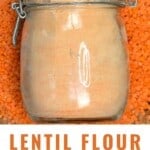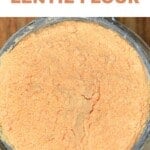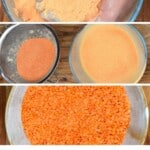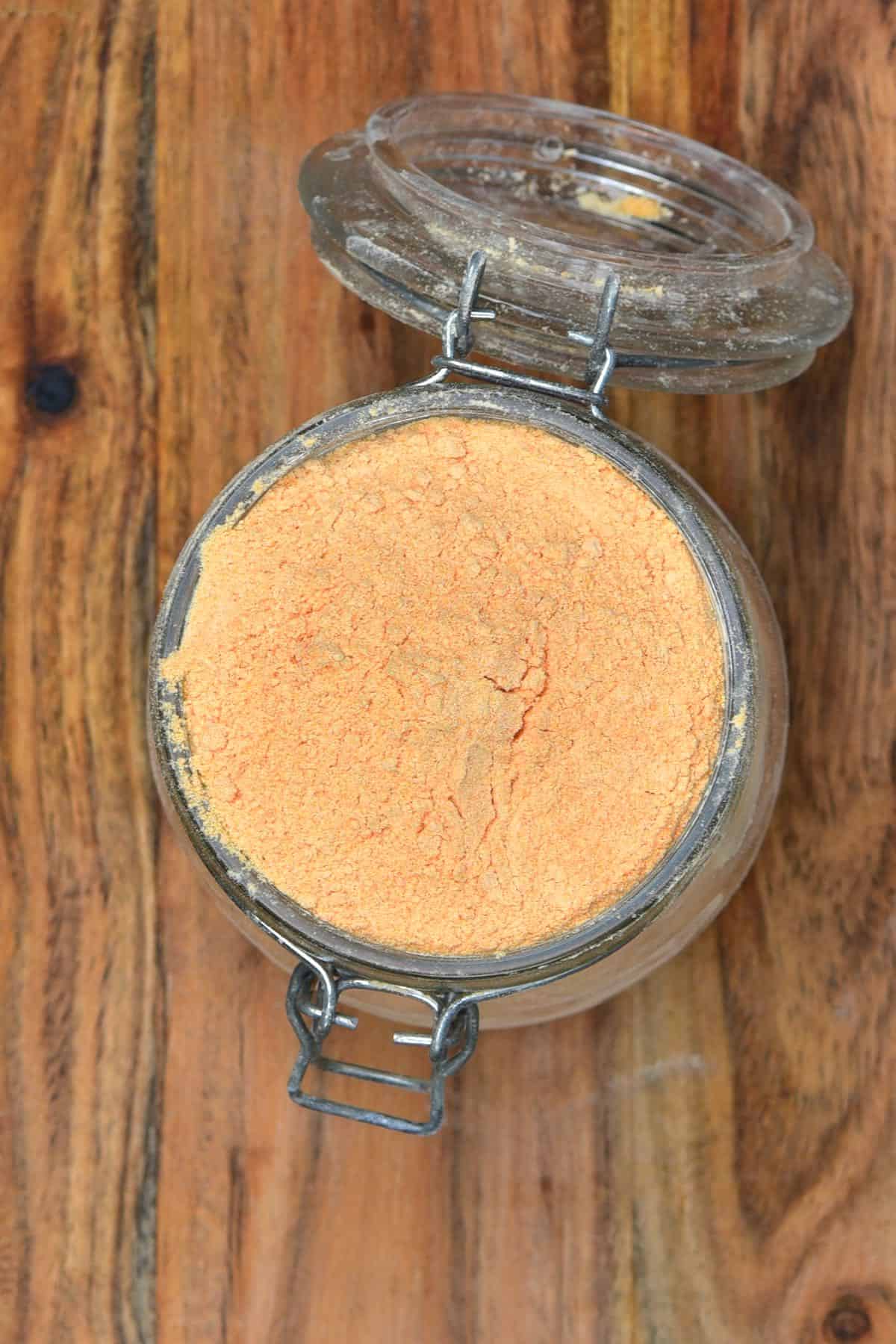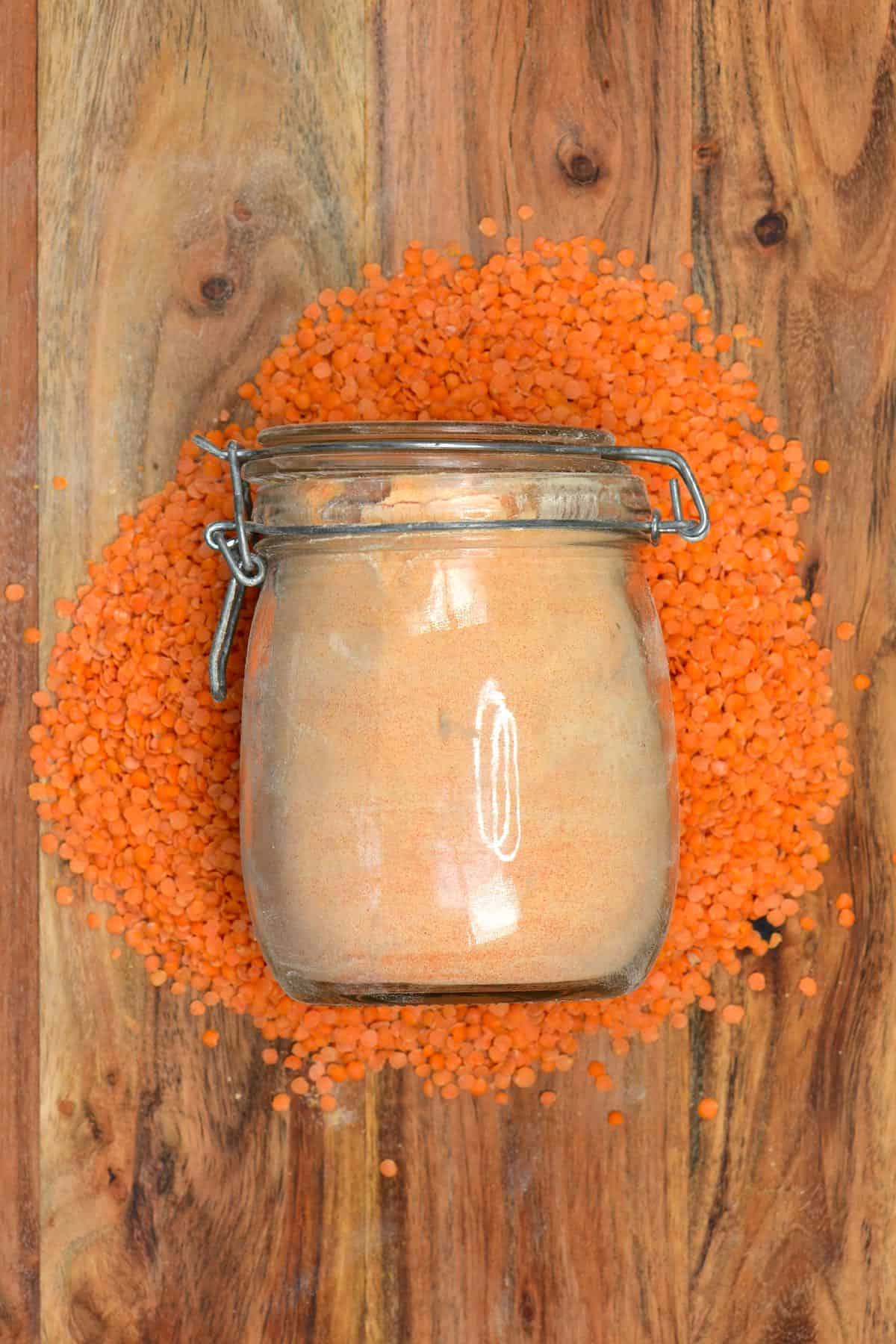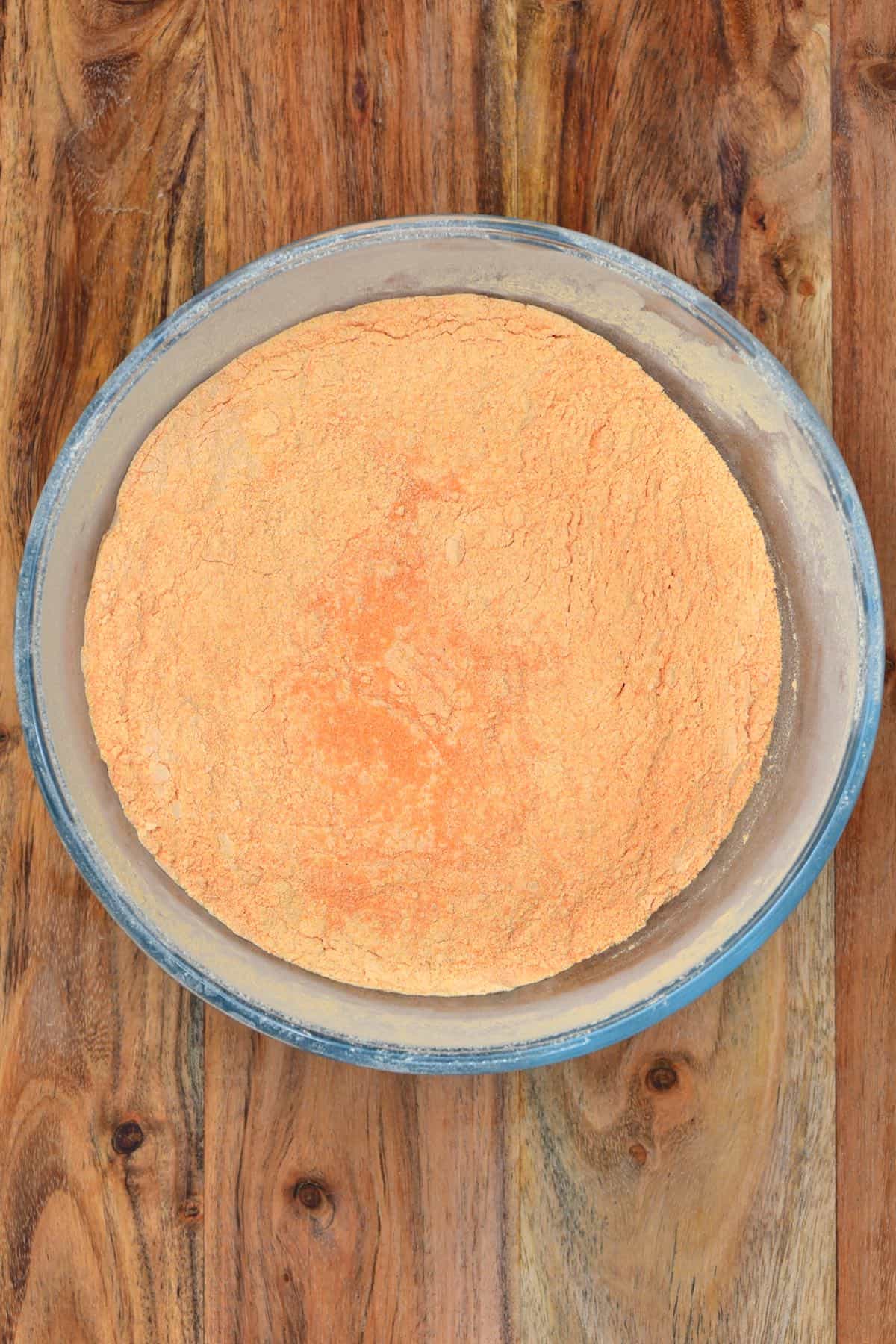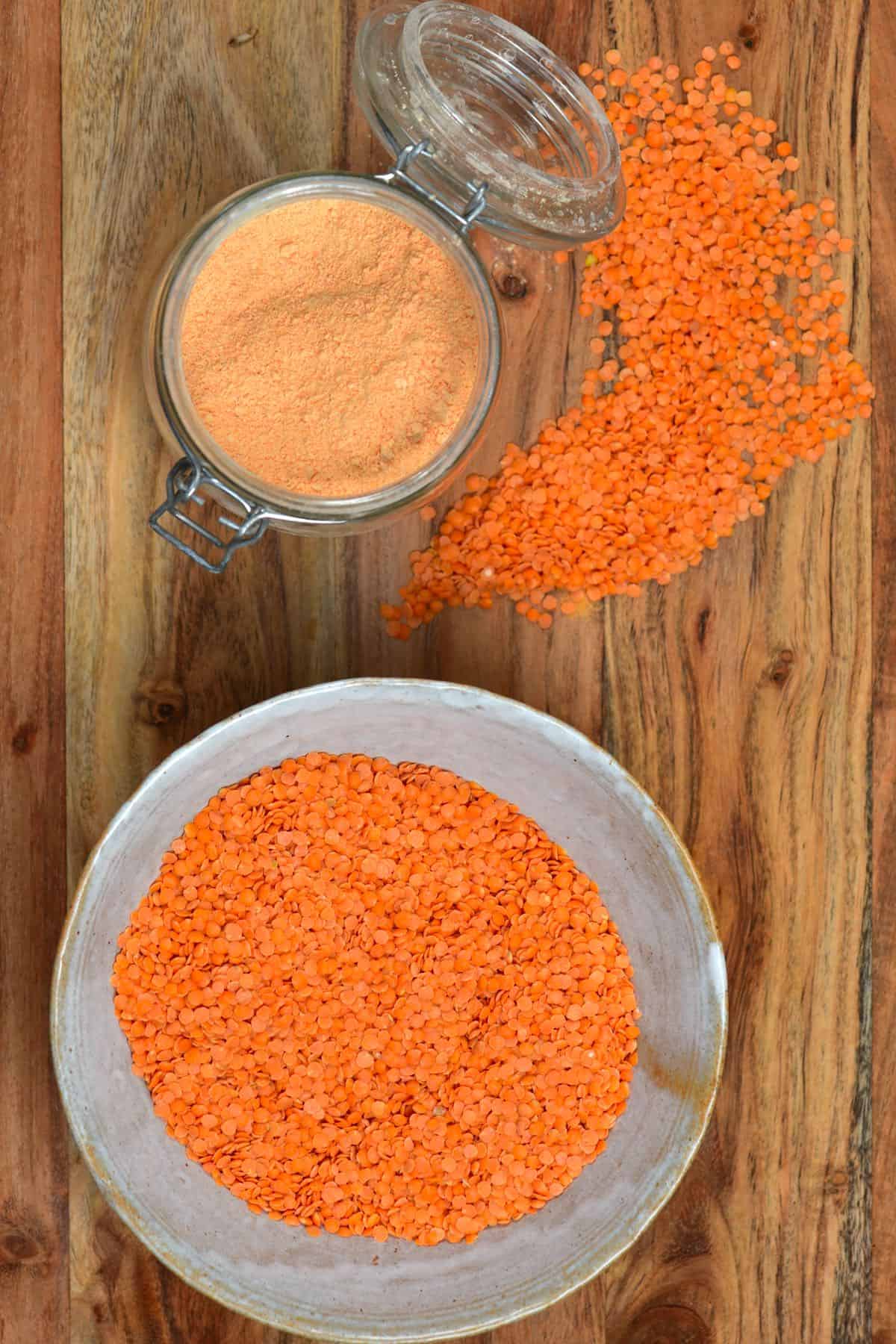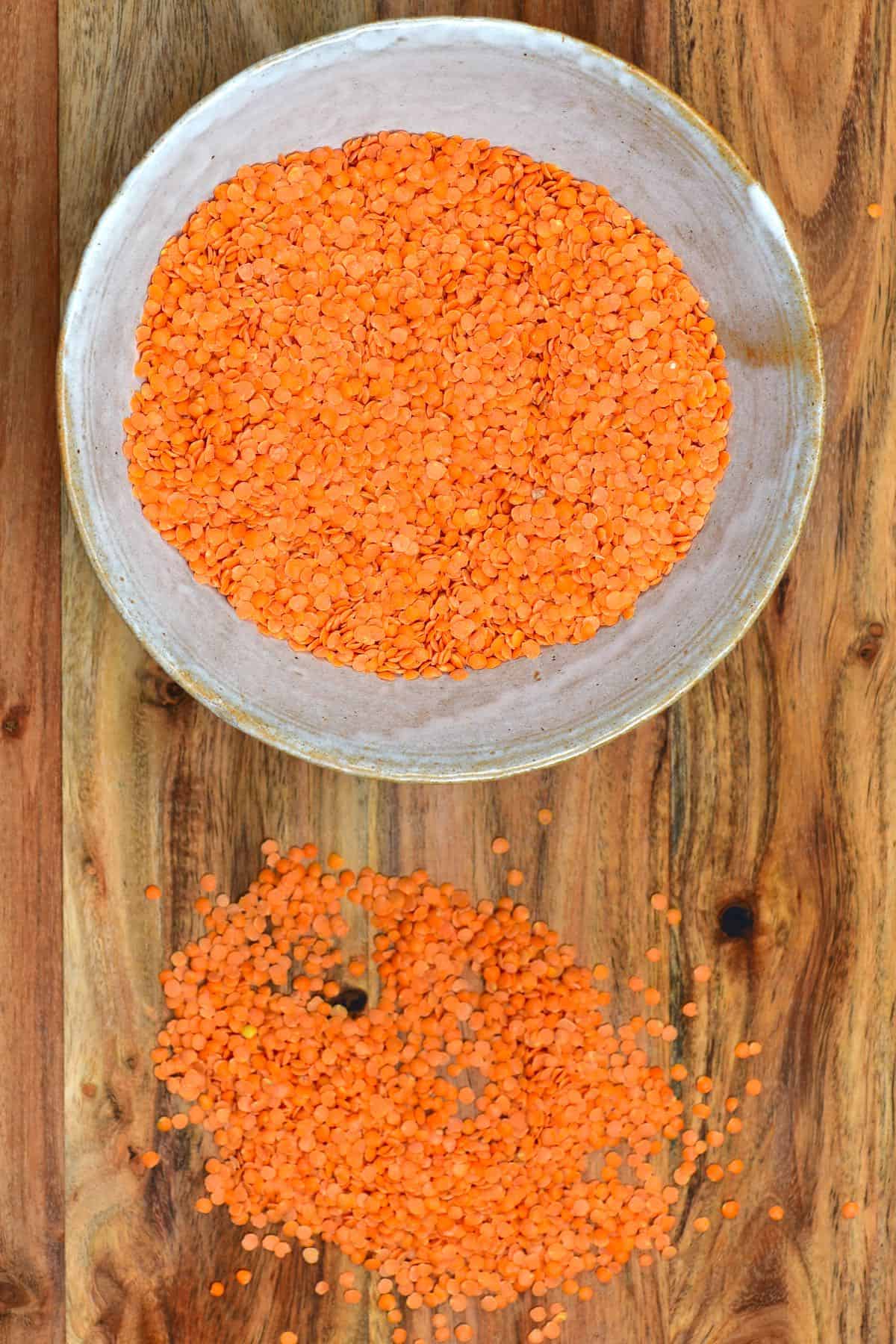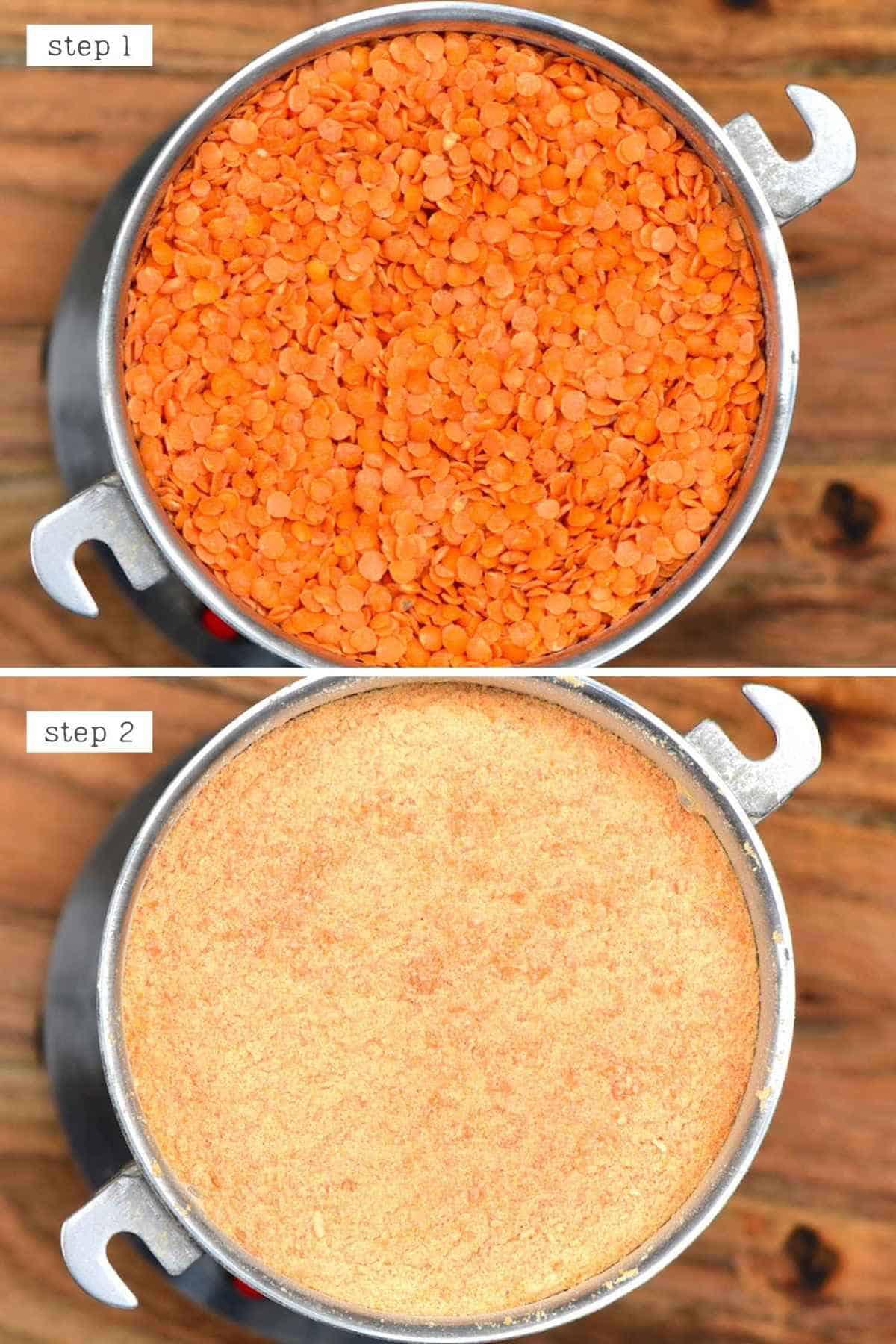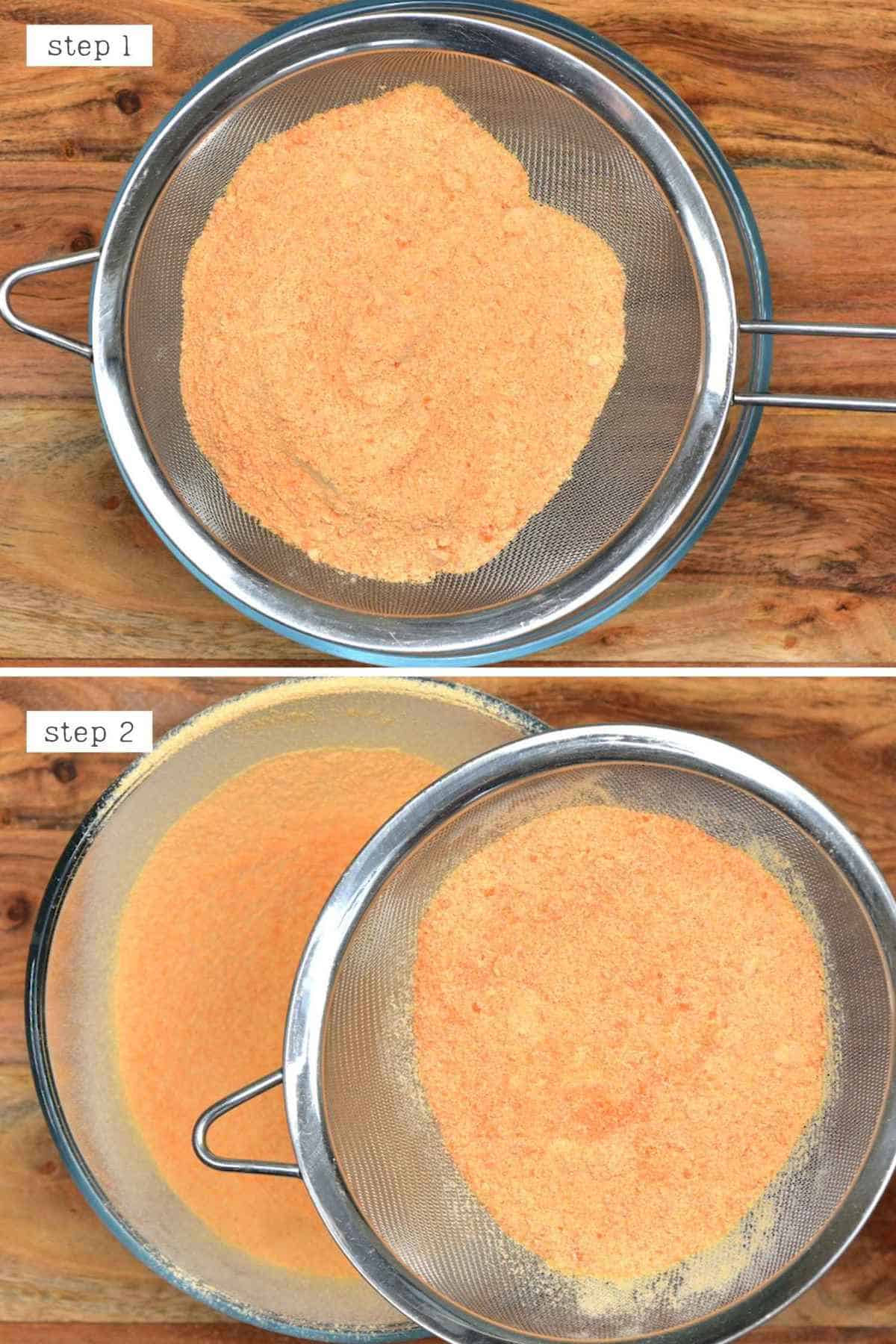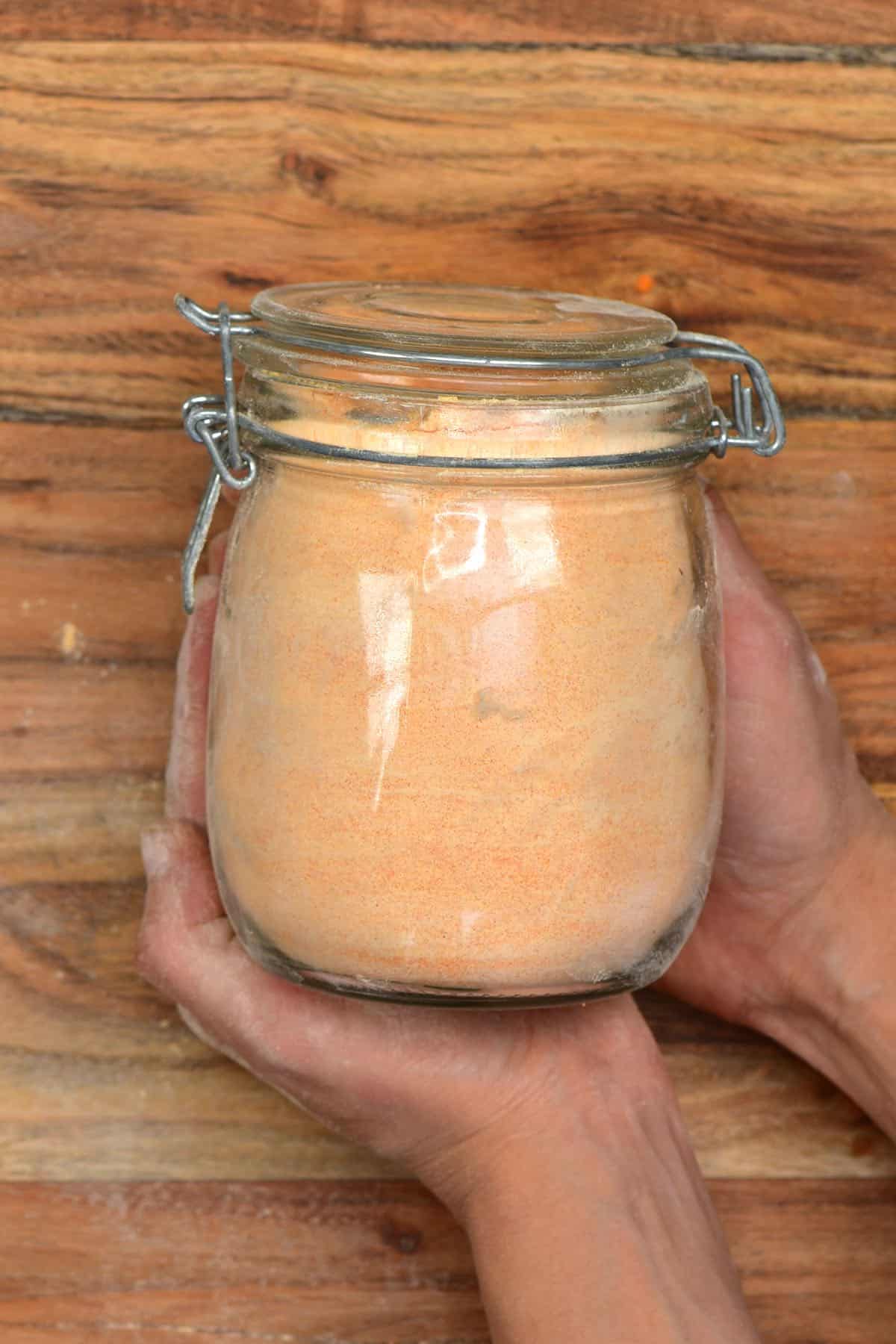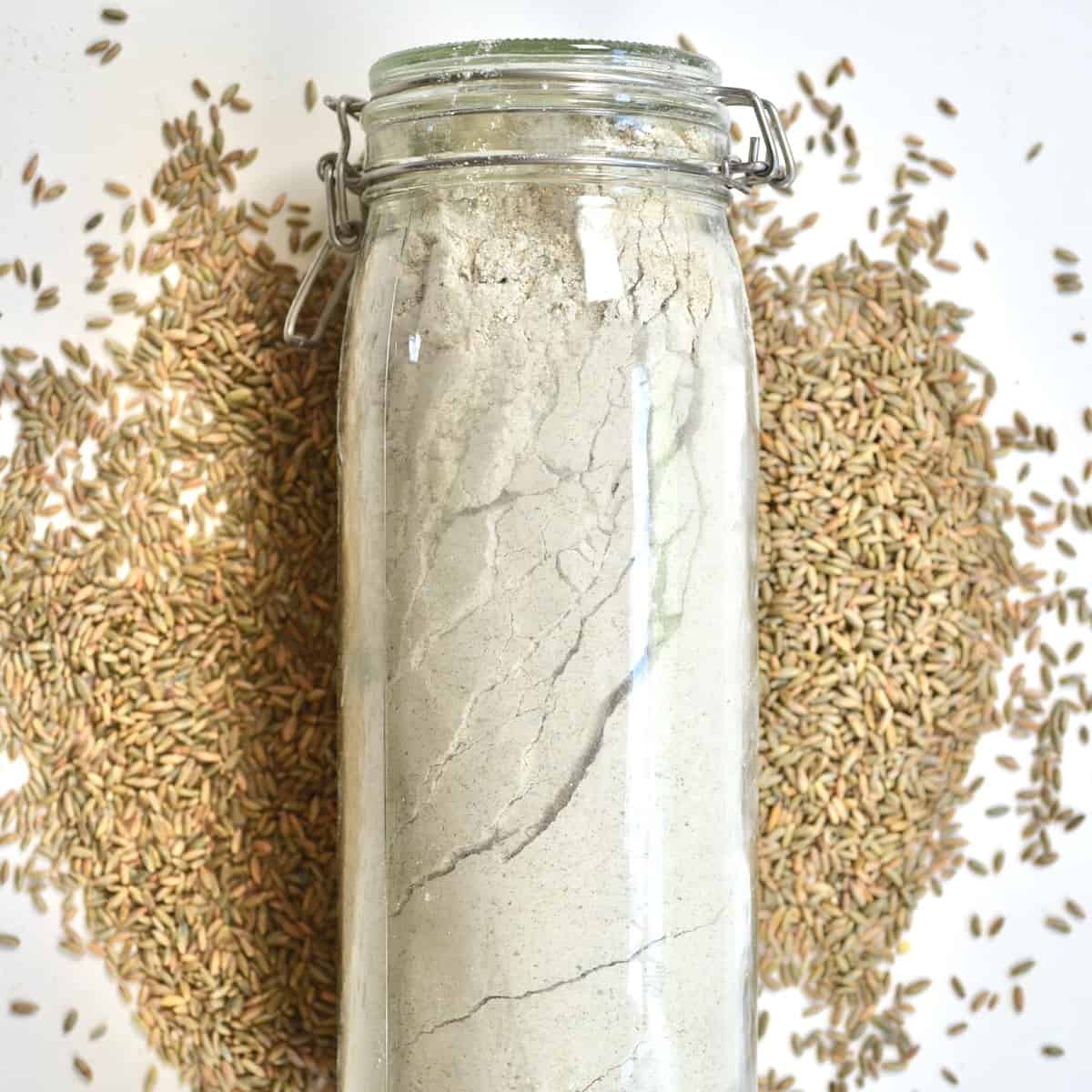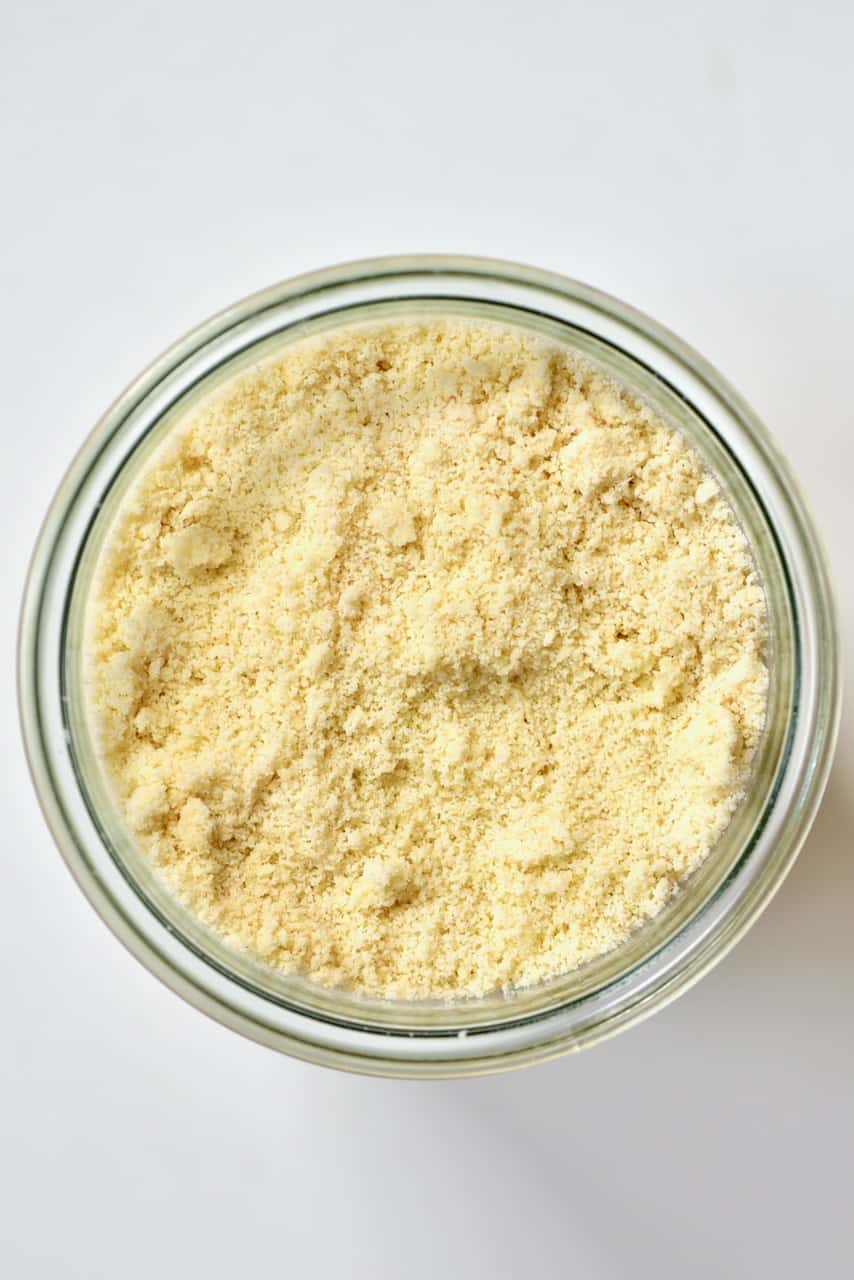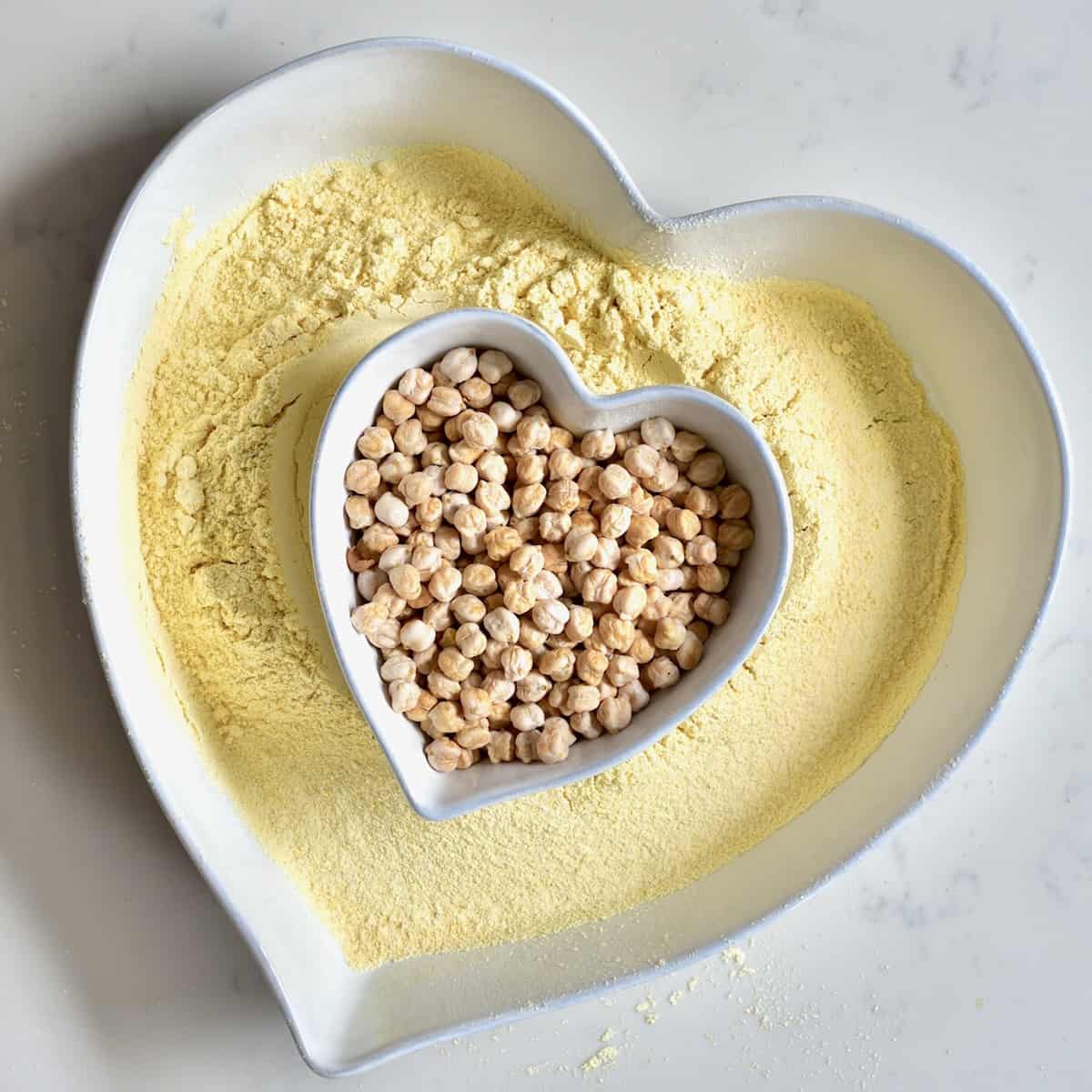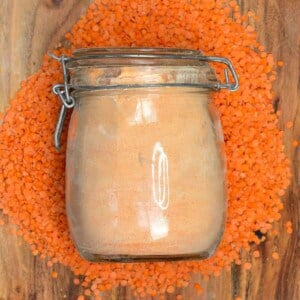It’s no secret that lentils are incredibly popular in plant-based cuisine, particularly within Indian dishes like daal, soups, and curry dishes. In fact, there are several varieties of lentils including Puy, green, and red lentil – which each taste and cook up slightly differently. However, this little legume is also excellent for a simple gluten-free flour option – perfect as a gluten-free pasta flour or for baked goods. So, what is lentil flour, you ask? It’s exactly what it sounds like – all you need are some uncooked, dried lentils that are ground into a fine flour, and voila, you have lentil flour, ready to use. For this particular method, I’ve used red lentils, though all lentils will work similarly (though they may take longer to break down, depending on which you use.) Even though you can buy this flour in a store, you’ll find that the price difference between buying a large bulk bag of lentils and buying a bag of lentil flour is ridiculous in most cases. All the better to stock up on your dry lentils and make your own lentil flour as and when needed for a cost-effective, flavourful alternative. Not to mention that, especially if you follow a gluten-free diet, many GF goodies require a blend of several different flours. Rather than having to buy each individual flour at a high price, making whatever you can at home is a great way to be more frugal. This post will take you through the health benefits of lentil flour, how to make, use and, store it, with top tips!
The Health Benefits & Downfalls Of Lentil Flour
Lentils, in general, come with several health benefits. Here are just a few of the benefits associated with this legume.
High In Protein and Fiber – in fact, just one cup (around 200g/7 ounces) of cooked lentils contains 18g of protein and 15.6g of fiber (3-4x the amount of fiber in traditional pasta). This will differ only slightly when using the dried flour. The fiber is excellent for supporting bowel and gut health. Meanwhile, the protein is perfect for those on a plant-based or high-protein diet. Less carb-heavy – when compared to other flour options although not by a massive amount. Lentils are also low GI, great for improving blood sugar levels. A good source of essential amino acids and antioxidants – great for overall body health and protecting the body against harmful free radicals. Contain various vitamins and minerals – including phosphorous, potassium, magnesium, copper, manganese, and zinc!Also high in iron – which can be lacking in those who consume a meat-free diet.Contain a broad range of phytochemicals – plant compounds that can help protect the body against various chronic diseases, like heart disease and type 2 diabetes. They actually have potent anti-inflammatory and antioxidant properties, and studies have shown them stopping cancer cells’ growth.May protect heart health – One study found that consuming lentils every day can increase ‘good’ HDL cholesterol levels while reducing harmful LDL cholesterol and triglycerides. They may also be beneficial for blood pressure levels.
On the other hand, it’s worth mentioning that lentils, like many legumes, contain some anti-nutrients, which can affect how our bodies absorb certain nutrients.
For example, lentils contain trypsin inhibitors, which can affect protein absorption. However, the levels are low enough that it’s not said to have much of an effect.They also contain phytic acid and lectins, like many legumes, which can bind to specific nutrients and prevent us from absorbing them. They can also cause gut issues. Though, they are also said to contain anti-bacterial and anti-cancer properties, while phytic acid also contains antioxidants.
As a final note, though legumes, in general, do contain anti-nutrients. There are ways to minimize the effect, including soaking and cooking the lentils (which also works in flour form). Unless you’re eating large quantities of these anti-nutrients daily, it shouldn’t become too much of a negative, and you will still absorb the majority of the nutrients.
How To Make Lentil Flour
There are technically three ways lentil flour can be made by tweaking the process or adding/removing a single step. To give everyone the full options, I’ll include every option below for you to choose from.
Step 1: Rinse the lentils
First, rinse your lentils well within a fine-mesh sieve. Remove any discolored lentils and any debris that may be in with the lentils.
Step 2: Soak the lentils (Optional)
If you want to soak the lentils to decrease the effect of the anti-nutrients, you can do that at this stage. Place the lentils in a large bowl with enough water (room temp or cold) to cover them by 1-2 inches. Leave them to soak for around 4 hours, or overnight if preferred. Note* You can go one step further and essentially ’sprout’ the lentils, which is said to maximize the bioavailability of the vitamins, minerals, and nutrients within them. To sprout the lentils, you can follow the process outlined here – which will take 2-3 days. Once soaked, drain and rinse the lentils once more.
Step 3: Dry the lentils
Spread out across a large surface area (like baking trays lined with kitchen roll or a kitchen towel) and allow to either air-dry or you can place in a dehydrator or the oven (on the lowest temperature, with the door propped open with a wooden spoon) until fully dehydrated. If you’ve soaked the lentils, they will take longer to dehydrate – so be patient or use the oven/dehydrator method. As long as you use low heat, the lentils won’t lose nutrients.
Step 4: Toast the lentils (Optional)
This is technically an optional step, but if you want a more flavorful, nutty lentil flour, it’s a good idea to toast the lentils lightly. You can do this with one of two methods.
Place them in a large skillet and toast for a few minutes until fragrant but not burnt. This should take 3-5 minutes.Alternatively, lay the lentils across a baking tray and place in the oven for 10-12 minutes at 200ºC/400ºF, mixing them up halfway.
Then allow the lentils to cool entirely.
Step 5: Grind the lentil flour
Transfer the lentils to your grinding tool of choice. You can use a high-speed food processor or blender (with a small jug), a mill, or a spice/coffee grinder. Depending on which tool you use, you may need to do this in multiple batches. If you’re using a food processor, it will take longer, and you’ll have to stop the machine to give it a break now and then. You also need to make sure that you add enough lentils to the jug, depending on the jug size. Otherwise, it simply won’t break down. Sieve the resulting lentil powder, then return the larger bits to be re-ground. Once ready, transfer the lentil powder to a large airtight container, like a glass jar.
How To Store
Homemade lentil flour will last several months when stored in an airtight, moisture-free container. You can even store the flour in the freezer for up to a year. The shelf life really depends on the best-before date of the lentils that you used to make the flour in the first place.
How To Use
As a gluten-free pasta flour – to make this red lentil pasta.Within flatbread and tortilla recipesFor pancakes, muffins – and other baked goodsAs a thickener/ binder for recipes like vegetarian meatballs or burgers.For other bread recipes – though it’s best to use it alongside other flours, the lentil flour can add flavor and protein to the bakes.
Lentil flour can easily be added to baked goods in smaller quantities to boost the nutritional value without compromising the texture and flavor. This is something that would require experimentation, but is great for doing when you have this flour to hand.
Related DIYs
How to Make Rye Flour (Pumpernickel Flour)Homemade Almond FlourHow To Make Chickpea FlourHow To Make Powdered Milk At HomeSimple Green Pea PowderHomemade Ginger Powder (Two Methods)How to make Turmeric powder at homeHow to Make Garlic PowderGluten-Free Red Lentil Crackers (Lentil Chips)
If you try this DIY red lentil flour recipe, then let me know your thoughts and any questions in the comments. I’d also really appreciate a recipe rating and would love to see your recreations – just tag @AlphaFoodie.
